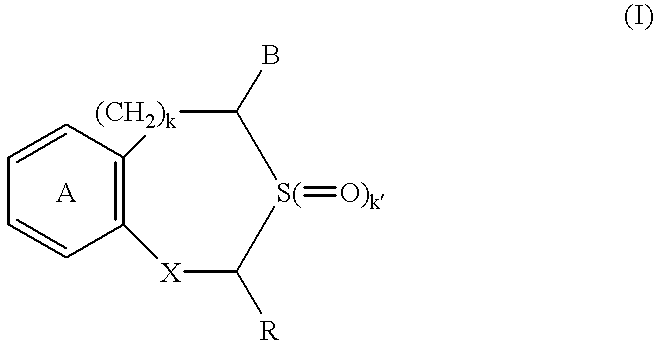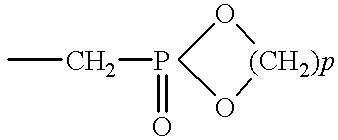Apatite-coated solid composition
a technology of solid composition and apatite, which is applied in the direction of drug composition, prosthesis, surgery, etc., can solve the problems of loosening and breaking of implants, adverse reactions, high incidence, etc., and achieves the effect of effective utilization of pharmacologic effects and good efficiency
- Summary
- Abstract
- Description
- Claims
- Application Information
AI Technical Summary
Benefits of technology
Problems solved by technology
Method used
Image
Examples
example 1
Production of Hydroxyapatite-coated Microcapsule Containing a Biodegradable Polymer
(1) To a mixture of sodium chloride (16.013 g), sodium hydrogen carbonate (0.706 g), potassium chloride (0.447 g), dipotassium hydrogen phosphate (0.348 g), magnesium chloride hexahydrate (0.610 g), calcium chloride dihydrate (0.735 g), and sodium sulfate (0.142 g) was added sufficient distilled water to make a total of 2 L. This mixture was adjusted to pH 7.4 by adding 0.1 M aqueous solution of hydrochloric acid (11 ml) and 0.1 M aqueous solution of tris(hydroxymethyl)aminomethane (7 ml) to thereby provide an aqueous ion solution.
(2) The microcapsules (20 mg) obtained in Reference Example 1 were placed in a vial and 20 ml of the aqueous ion solution prepared under (1) was added. The mixture was stirred well and then allowed to stand in a constant-temperature water bath at 36.degree. C. for 5 days. The mixture was then centrifuged and the resultant hydroxyapatite-coated microcapsules were recovered. T...
reference example 2
(2R,4S)-(-)-N-[4-(diethoxyphosphorylmethyl)phenyl]-1,2,4,5-tetrahydro-4-methyl-7,8-methylenedioxy-5-oxo-3-benzothiepine-2-carboxamide (hereinafter referred to as compound A) (0.55 g) and lactic acid-glycolic acid copolymer (lactic acid / glycolic acid=85 / 15 mole %, viscosity 0.164, weight average molecular weight about 14900, Wako Pure Chemical Industries) (4.45 g) were dissolved in dichloromethane (8 ml). This solution was poured into 1600 ml of 0.1% (w / v) aqueous solution of polyvinyl alcohol (Nippon Gosei Kagaku Kogyo, Gosenol.TM. EG-40) under constant agitation in a turbine homomixer to provide an O / W emulsion.
This O / W emulsion was stirred at room temperature for 3 hours to evaporate off the dichloromethane and the residue was centrifuged. The pellet was redispersed in distilled water and recentrifuged to wash off the free compound A and polyvinyl alcohol The harvested microcapsules were suspended in a small amount of distilled water and the suspension was lyophilized to give micr...
example 2
Production of Apatite-coated Microcapsule Containing Lactic Acid-glycolic Acid Copolymer
The microcapsules (20 mg) obtained in Reference Example 2 were placed in a vial and the aqueous ion solution (20 ml) prepared by the manner of Example 1 (1) was added. The mixture was stirred well and then allowed to stand in a constant-temperature water bath at 36.degree. C. for 1 day. The mixture was centrifuged and the pellets were recovered and suspended in 20 ml of fresh aqueous ion solution. The suspension was allowed to stand for a further 4 days at 36.degree. C. This suspension was centrifuged and the pellets were dispersed in distilled water and recentrifuged to wash off the residual aqueous ion solution. The resultant microcapsules were harvested and suspended in a small amount of distilled water and lyophilized to give the desired product. The mean particle diameter determined with a caulter counter was 39 .mu.m. The surface of microcapsules had been coated with a 2 .mu.m-thick apatite...
PUM
| Property | Measurement | Unit |
|---|---|---|
| Angle | aaaaa | aaaaa |
| Nanoscale particle size | aaaaa | aaaaa |
| Temperature | aaaaa | aaaaa |
Abstract
Description
Claims
Application Information
 Login to View More
Login to View More - R&D
- Intellectual Property
- Life Sciences
- Materials
- Tech Scout
- Unparalleled Data Quality
- Higher Quality Content
- 60% Fewer Hallucinations
Browse by: Latest US Patents, China's latest patents, Technical Efficacy Thesaurus, Application Domain, Technology Topic, Popular Technical Reports.
© 2025 PatSnap. All rights reserved.Legal|Privacy policy|Modern Slavery Act Transparency Statement|Sitemap|About US| Contact US: help@patsnap.com



